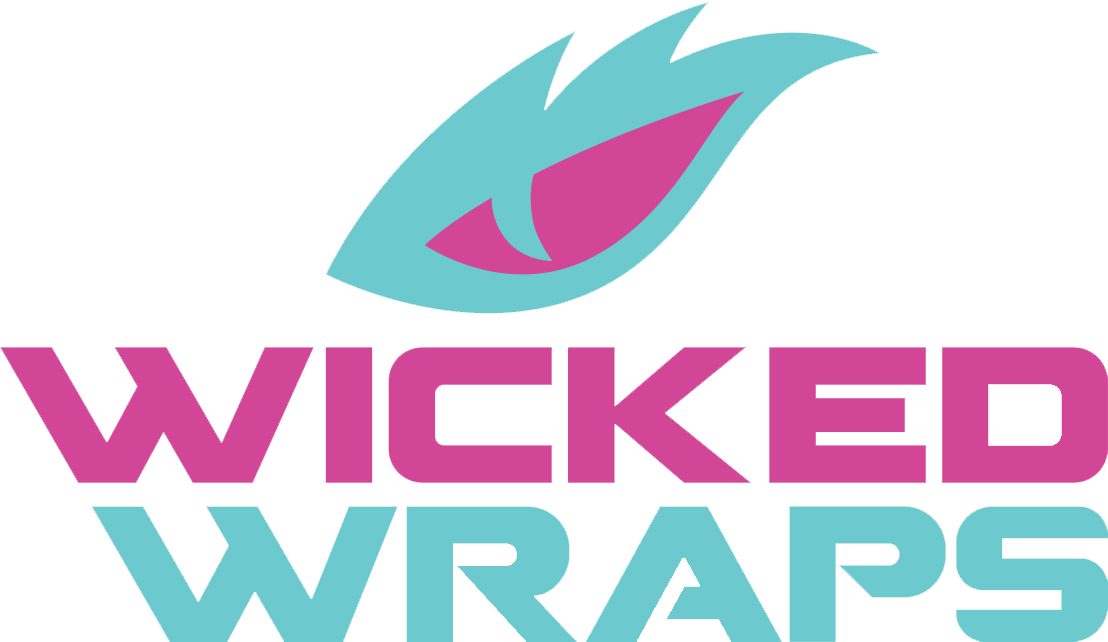There are three main types of wide-format printers that are used to print on vinyl: solvent/eco-solvent, latex and UV. As a rule of thumb, look for a shop that only uses OEM inks because third party inks are known to show more pixilation, be more prone to UV fading and more likely to adversely affect the vinyl’s ability to adhere (and stay stuck) to the vehicle.
TYPES OF DIGITAL PRINTING TECHNOLOGY
Tip: ask what type of printer (brand and model) will be used to print your wrap and if it uses OEM inks or 3rd party inks. It makes a big difference in the overall appearance, quality and longevity of your wrap!
Solvent and Eco-Solvent
These are the original wrap printers of the industry and use extremely aggressive, stinky inks (either solvent or eco-solvent). These printers are known for saturating vinyl with heavy amounts of ink that takes a long time to dry or “off-gas” as we call it in the industry. The main disadvantage of using solvent/eco-solvent printers is that without proper time to off-gas, wraps printed on these printers are extremely prone to failure. This is because the heavy concentration of ink can attack the adhesive on the back of the vinyl and cause it to stick inconsistently, which puts the wrap at high risk of peeling or bubbling back. Moreover, prints that are laminated too soon after printing without ample time to off-gas tend to look more cloudy, hazy or bubbly because the ink fumes get trapped underneath the laminate. Solvent/eco-solvent prints need to off-gas for a minimum of 48 hours prior to laminating.
Tip: If you talk to a shop that uses a solvent/eco-solvent printer and says they only need your vehicle for two days, consider yourself warned: that shop has no intention of waiting the full 48 hours to laminate all the panels before installing them on your vehicle, and laminating too soon will adversely affect the print quality and adhesion of the wrap.
Latex
This is the latest and greatest technology in the wrap world and uses less abrasive inks than solvent printers. Latex printers are unique in that they use multiple fans and extremely high-powered heaters to cure the ink as it is being laid down on the vinyl, resulting in prints that are 100% dry immediately after being printed. Latex printers completely eliminate the need for off-gassing which makes them ideal for the vehicle wrap industry. Moreover, since latex ink’s composition is naturally more flexible than solvent/eco-solvent ink, it’s ideal for applications requiring vinyl to conform or stretch around curves.
Tip: Look for a shop that uses a latex printer for vehicle wraps. The print quality is exceptional and the panels don’t need to off-gas for 48 hours before laminating, which means the shop won’t need your vehicle for as many days.
Tip: If you talk to a shop that uses a solvent/eco-solvent printer and says they only need your vehicle for two days, consider yourself warned: that shop has no intention of waiting the full 48 hours to laminate all the panels before installing them on your vehicle, and laminating too soon will adversely affect the print quality and adhesion of the wrap.
UV
Ultra Violet (UV) printers are not typically recommended for printing vehicle wraps because the inks’ curing process under UV lights makes the ink brittle when dry. These printers are great for doing signage and window graphics, but when you take UV printed vinyl and try to stretch and conform it to fit around highly compound curves or bend into deep crevices, there’s a greater risk for ink cracking underneath the laminate.
Tip: Pass on getting a vehicle wrap done by a shop that has only a UV printer.
Tip: Look for a shop that uses a latex printer for vehicle wraps. The print quality is exceptional and the panels don’t need to off-gas for 48 hours before laminating, which means the shop won’t need your vehicle for as many days.
Tip: If you talk to a shop that uses a solvent/eco-solvent printer and says they only need your vehicle for two days, consider yourself warned: that shop has no intention of waiting the full 48 hours to laminate all the panels before installing them on your vehicle, and laminating too soon will adversely affect the print quality and adhesion of the wrap.
